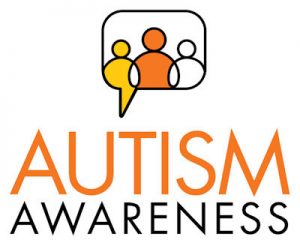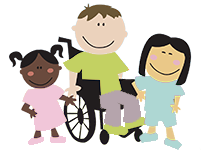Are Some Infants at Greater Risk of Developing Autism Spectrum Disorder?
[vc_row][vc_column][vc_column_text]Are Some Infants at Greater Risk of Developing Autism Spectrum Disorder?
Everyone loves a new baby in the family! The promise of new possibilities and the joy and rewards of seeing a new little person develop before our eyes is hard to resist. We don’t like to dwell on the possible risks associated with planning to have a baby or with possible risks for a new baby who has already joined the family.
 We all want to parent with a positive attitude and not look too far down the road with worries about things that might not go as we hope. That being said, it is wise to be armed with information that will increase your baby’s chances of having optimal development.
We all want to parent with a positive attitude and not look too far down the road with worries about things that might not go as we hope. That being said, it is wise to be armed with information that will increase your baby’s chances of having optimal development.
In America where the prevalence of autism in children has increased significantly in the past two decades, it is important to see what research suggests can increase the likelihood of developing ASD (autism spectrum disorder). Additionally we want to know what we can do to decrease the severity of ASD in our young children who are at risk or who receive this diagnosis.
Prenatal Considerations
There are many prenatal factors that can impact whether an infant will be pre-disposed towards developing ASD. For instance, it is believed that 15-20% of cases of autism are related to genetics, which is something we have no control over at this time though couples may want to pursue genetic counseling.
However, some risk factors have been identified that we may control to some extent: spacing of pregnancies; inadequate nutrition and vitamins; exposure to air pollution and pesticides; a sibling with a diagnosis of ASD.
Spacing of Pregnancies
Recent meta-analysis of research has found that pregnancies spaced 3 to 4 years apart have half the risk for ASD as pregnancies that are spaced within 12 months. Additionally, the prevalence of autism increases when pregnancies are spaced more than 5 years apart. These studies do not propose that spacing is the cause, as much as suggest the underlying physical environment may not be optimal for the healthiest pregnancies. Two risk factors in particular, associated with spacing of pregnancy have been identified: Nutritional depletion and maternal inflammation.
- Nutritional Depletion
Mothers frequently experience a nutritional depletion after giving birth. Both iron and folic acid can be depleted. According to research, it take the body 4 – 12 months to recover folic acid levels postpartum (Conde-Agudelo, Rosas-Bermudez, Norton, 2016). Depletion in these nutrients have been associated with autism. So it is important to pay special care to nutrition and vitamin supplements during pregnancy and be aware of how critical nutrients are depleted after giving birth.
- Maternal Inflammation
Maternal inflammation, which is the body’s response to infection, can impact the brain development of the fetus. (Conde-Agudelo, et al.,2016). It has been found that maternal inflammation may also remain for up to 10 weeks after giving birth. So a baby conceived within a few months of a previous birth can be impacted by the lingering effects of an infection. (Choi et al., February, 2016).
Nutrition and Vitamins
A healthy diet, along with vitamin supplements, is important when trying to conceive and also to insure the healthiest pregnancy for mom and the developing baby. Ask your doctor if you should have bloodwork to identify any deficiencies that should be addressed during this important time. Be sure you take the recommended amount of Folic acid since low levels of vitamin (B 9) can be associated with birth defects (Herbert 2014, Autismspeaks).
Mother’s Exposure to Pesticides and Air Pollution.
Exposure to pesticides and certain air pollutants before conception and during pregnancy has been linked to higher rates of autism as well as other developmental disabilities. So be aware of the environment and avoid areas that have a higher degree of pesticides and pollutants. For instance, realize that many farming operations use pesticides that can impact the surrounding area for several miles (Shelton, et al, 2014, CHARGE Study) And fine particle pollutants such as those that are emitted from vehicles and industry can pose a risk during pregnancy (Ra et, al, 2015, Nurses’ Health Study 11).
A Sibling with Autism Spectrum Disorder
18.7% of younger siblings developed autism when an older sibling had the diagnosis, according to a study of recurrence of ASD in families. (Ozonoff et al., 2011). Families need to take this information into consideration when planning to have another child. This is also important so that parents can be particularly observant for red flags associated with ASD and begin early intervention that may prevent or lessen the impact of ASD in siblings. Wendy Stone, PhD, professor of psychology who directs the University of Washington Autism Centers, states, “If we can begin intervention for high-risk children in the first or second years of life, we may find the effects are much more powerful”(Ozonoff et al., 2011). Keep in mind that there is no magic cure for every child with ASD and parents cannot blame themselves if, despite their best efforts, an additional child develops autism. There are many factors that determine an individual’s outcome.
What Can Be Done If We Suspect Autism Spectrum Disorder in Our Very Young Children or with Siblings of a Child With ASD?
First, understand that there are many parenting strategies which are beneficial for the development of all children. And we will talk about some of those. But if you have concerns about your infant’s or young child’s development, it is best to be aware of developmental red flags. It is also important to share your concerns with your pediatrician. It would also be wise to have your young child assessed by a pediatric speech pathologist and occupational therapist experienced with autism spectrum disorders. These specialists can provide treatment for your child as well as parent training and support.
Red Flags for the Very Young Child
Communication, Eye Contact, and Joint Attention
Infants typically turn towards a speaker by 3 months of age and vocalize in response to a speaker with cooing and babbling by age 6 months. By 6 months a baby typically will stop crying when picked up and also express a desire to be picked up through expression and vocalization. By the age of 4-6 months a baby will make eye contact with a speaker or others of interest. Joint attention, which is the sharing between two people of attention towards an object or other person, starts developing as early as 3 months. So for instance if you and your baby both look at a bird outside of the window together and then acknowledge through gestures and eye contact that you are both attending to the same experience, you have joint attention. If your infant is not doing these things by 4-6 months, it is important to talk with your pediatrician about communication development.
Sensory Processing, Self-Regulation, and Sleep patterns
Self-regulation, a brain based ability that begins developing at a very early age. It is the ability to adjust alertness and reactions based on changes in the environment or situation. For infants, self-regulation is rooted in neurological development, such as the physiological ability to be aroused or to calm down when tired or hungry. Sensory processing, which is also a neurologically based skill refers to the ability to process information effectively from the different sensory modalities, such as sight, sound, smell, taste and touch.
If your baby is having difficulty adjusting to eating or sleeping schedules or seems unable to self sooth or seems to over react or under react to normal sensory input by age 6 months, you should discuss this with your pediatrician.
There are many other red flags that may not be as easy to identify with infants, such as frequent tantrums, repetitive behaviors, or a baby that is very content to be left alone. These characteristics are more troubling when found alongside the other red flags that have been discussed. It is always wise to mention any concerns you have to your pediatrician.
How Can We Intervene When We Suspect an ASD in an Infant or Very Young Child?
Whether parents suspect a developmental disorder or not, there are strategies that we know help a child develop better communication and social skills. So we need to become more intentional about our interactions with our babies and young children and we need to be sure we provide the structure and “busyness” that will increase engagement with the world.
Dr. Sally Rogers Ph.D., of the UC Davis Mind Institute (Medical Investigation of Neurodevelopmental Disorders) in collaboration with Geraldine Dawson, developed the Early Start Denver Model. This model provides training for parents designed to encourage social engagement with their infants. The training focuses on:
- Drawing infant attention to the parent’s face and voice
- Parent imitation of the infants’ sounds and actions
- Use of toys to support the baby’s attention to social cues
- Enjoyable activities that promote parent-infant interaction
We also know that children on the spectrum need at least 20 hours of direct intervention each week. So this means that families must plan consistent use of these of strategies throughout the day. Involving grandparents and other close family friends in these purposeful interactions will also help with generalizing social engagement across people and settings. The Early Start Denver Model recommends that 15 hours of intervention be done by therapists and at least an additional 5 hours be done by parents. Speech therapists can treat young children as well as train parents. At Speech & Occupational Therapy of North Texas, speech-language pathologists are experienced in treating autism spectrum disorders and training families. Families may also want to consider using ABA (Applied Behavior Analysis) programs that incorporate natural and developmental strategies along with behavioral strategies.
The Denver Model Specifically incorporates the following practices, which are all important strategies to use with any young child:
- Naturalistic strategies
- Sensitive to normal developmental sequence
- Deep parental involvement
- Focus on interpersonal exchange and positive affect
- Shared engagement with joint activities
- Language and communication taught inside a positive, affect-based relationship
Self-regulation evolves in typically developing children as they feel comforted and safe within the routines of their day. Those who may have ASD will have more difficulty picking up on the normal environmental cues that help establish self-regulation. Parents will need to be more intentional in establishing routines, providing predictable and consistent cues for different changes in the day. For instance, associating a certain song with bed time, or sticking to a certain daily schedule, at least at an early age. Hold and touch your child with light or deep pressure, whichever seems to be most comforting. Whatever you do, keep touching and engaging your child!
Trust Your Instincts!
Always err on the side of caution! If you have any concerns about how your infant is developing, talk with your pediatrician. If you suspect any delay or developmental differences, get an evaluation from a speech language pathologist or occupational therapist experienced with children. Speech & Occupational Therapy of North Texas has speech therapist in Frisco, Plano and McKinney locations who love children and have extensive experience with developmental disorders, including autism spectrum disorders. Our clinics also have pediatric occupational therapist in McKinney, Frisco and Plano who specialize with sensory challenges as well as motor disorders.
We are here to help families! Please call if we can assist you in any way. Speech & Occupational Therapy of North Texas is a network provider for many major medical plans and we are happy to check your benefits. Contact us at 972-424-0148.
For more information about this topic, visit:
https://www.naeyc.org/files/yc/file/201107/Self-Regulation_Florez_OnlineJuly2011.pdf
https://ehp.niehs.nih.gov/1307044/
https://ehp.niehs.nih.gov/1408133/
https://www.focusforhealth.org/inflammation-prenatal-health/
https://www.ncbi.nlm.nih.gov/pubmed/26822608
https://www.ncbi.nlm.nih.gov/pubmed/28393350[/vc_column_text][/vc_column][/vc_row]
